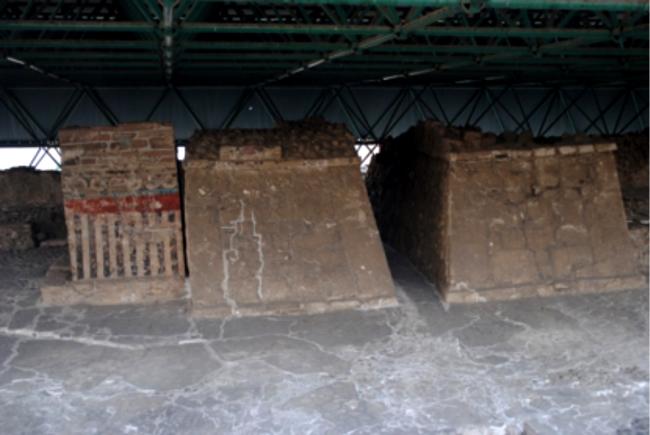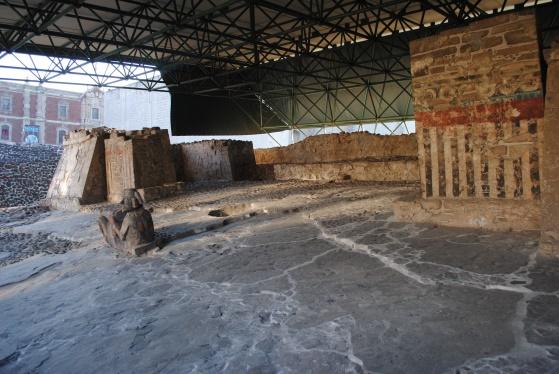
-

Punto 3. Etapa II. Gobierno de Acamapichtli, Huitzilíhuitl y Chimalpopoca (1376-1427)
-

Adoratorio de Tláloc
Frente a la entrada podemos ver la escultura policromada de un Chac-Mool, con atributos de Tláloc, que aún conserva el color original. En 1989 se excavó un túnel en la mitad de la escalinata que conduce a este adoratorio y se encontró la cabeza de otro Chac-Mool. Esta es la pieza mexica más antigua hallada en el Templo Mayor, que data del año 1350, aproximadamente.
Punto 3. Etapa II. Gobierno de Acamapichtli, Huitzilíhuitl y Chimalpopoca (1376-1427)
Estructura
This stage is the oldest that has been excavated to date. On the south side, dedicated to Huitzilopochtli, is the téchcatl or sacrificial stone, on which enemy warriors were sacrificed in honor of the Sun. On the north side, dedicated to Tlaloc, we observe a sculpture that still conserves remains of colors and that represents a Chac-Mool or divine messenger, the intermediary between the gods and men. Further in the background we can see the walls of the shrine that also retain traces of painting.
Adoratory of Tlaloc: Tlaloc, god of rain, was venerated by the Mexica and many Mesoamerican peoples since ancient times. This deity was attributed to be in charge of bringing the rain that made harvests possible, but also of bringing the storms that ended them. Inside the shrine, there is a bench on which the image of the god must have been placed. In this part of the building is the best preserved mural painting, whose reproduction can be seen in Room 5 of the museum.
In front of the entrance we can see the polychrome sculpture of a Chac-Mool, with attributes of Tlaloc, that still conserves the original color. In 1989 a tunnel was excavated in the middle of the stairway leading to this shrine and the head of another Chac-Mool was found. This is the oldest Mexica piece found in the Templo Mayor, dating from approximately 1350.

